The 7 Best High-Protein Grains To Eat
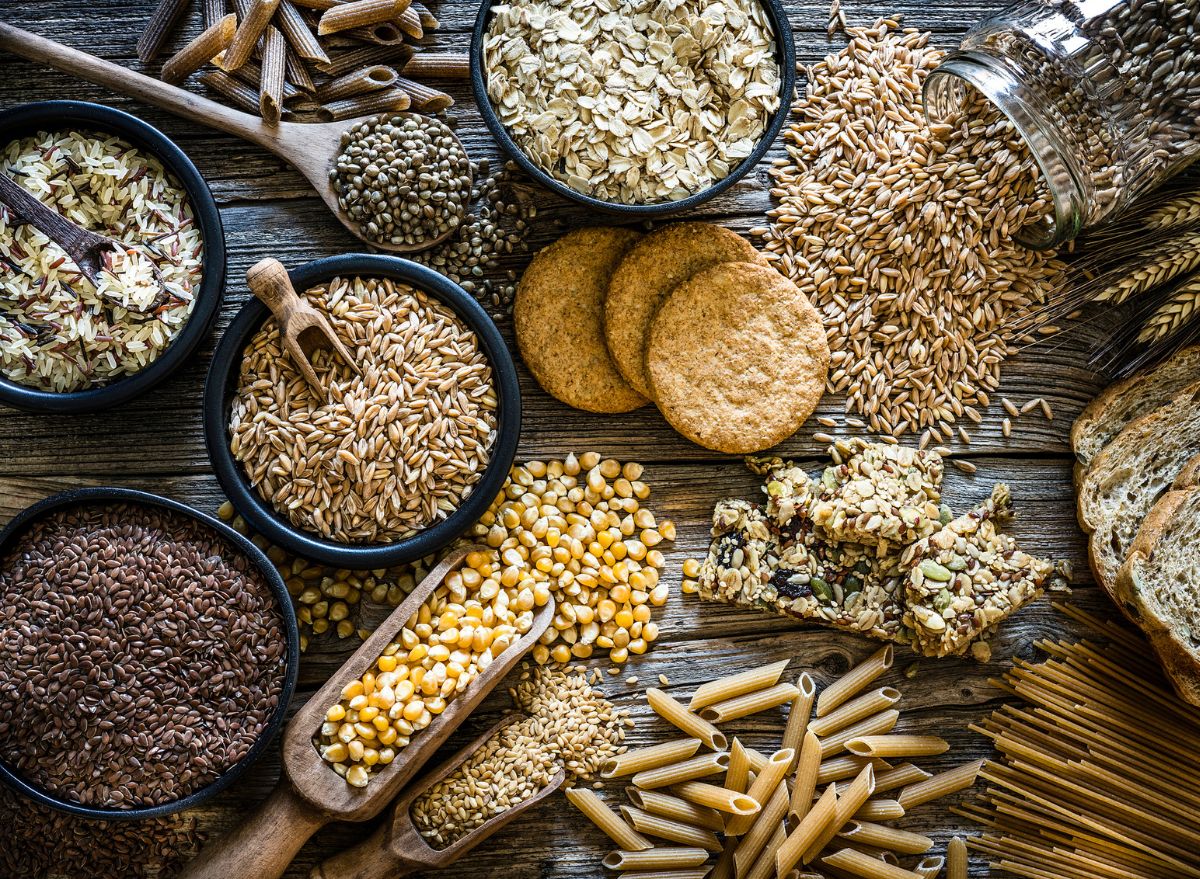
Despite what we were told in the 90s and early 2000s, carbohydrates are not the enemy; in fact, they are essential for providing energy to the body. Whole grains, in particular, have been linked to an array of impressive health benefits, like a reduced risk of obesity, type 2 diabetes, heart disease, and even cancer. The key to their health-promoting properties lies in their high levels of fiber and antioxidants, but what many people overlook is that some of these grains also offer a valuable source of protein.
Eating high-protein whole grains is a healthful choice for several reasons. For starters, everyone needs protein for healthy muscles, bones, metabolism, weight maintenance, and immunity. Choosing whole-grain sources of protein not only fulfills this essential need but also provides the body with significant levels of fiber and antioxidants—nutrients that may not be as readily available in animal proteins. Also, eating grains that are high in protein can help those who are vegetarian or follow a plant-based diet make sure they're consuming enough protein daily. And lastly, many of these protein-rich grains are lower in calories and fat than a lot of animal-based proteins like meat and dairy products.
Read on to learn more about the whole grains that contain the highest levels of protein, along with some other health benefits they carry. Then, check out How Much Protein You Need To Eat for Weight Loss.
Sorghum
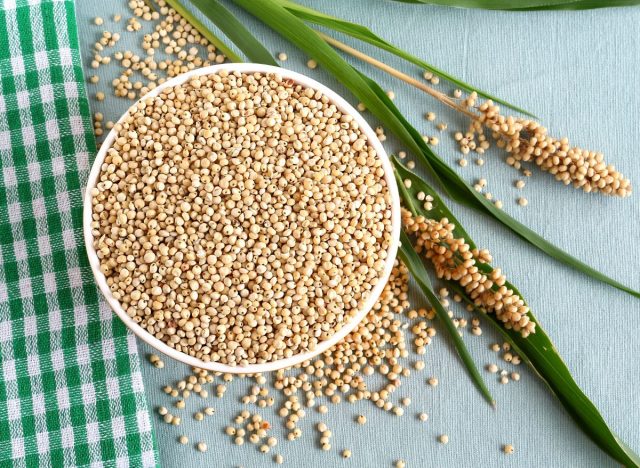
Protein per 1/2 cup: 10.2 grams
Sorghum isn't as common of a household grain as something like rice or quinoa, but this whole grain is packed full of protein, with around 10 grams per serving.
You can eat whole-grain sorghum as a side dish or inside of a soup or salad, or you can enjoy "popped sorghum," which can be used in the same way as popcorn and can be popped right on your stovetop.
Aside from containing protein, a serving of sorghum also has 6 grams of fiber and is a rich source of nutrients like copper, iron, and vitamins B1 and B6.
Teff
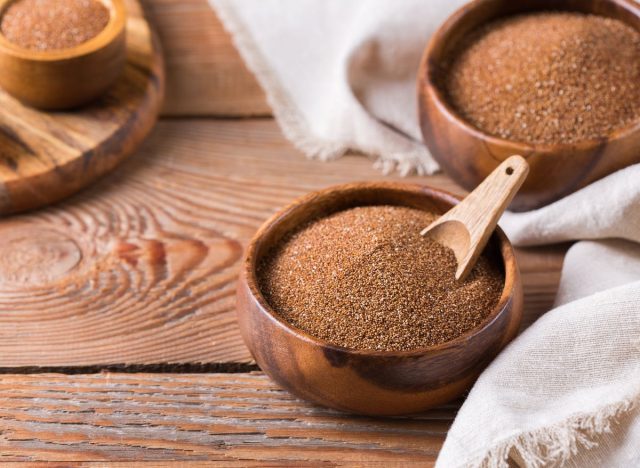
Protein per cup (cooked): 9.8 grams
Teff is a superfood grain native to Ethiopia and is the foundation of many Ethiopian dishes. For instance, if you've ever had injera—a fermented, spongey Ethiopian bread—then you've had teff in flour form. You can also buy teff in its whole grain form in most stores and can cook it into soups, stews, or porridges.
This grain is not only protein-rich (almost 10 grams per cup), but it's high in fiber and nutrients like iron, calcium, and potassium. According to a report published in the journal Diabetes, Metabolic Syndrome and Obesity, teff can potentially help in the management of diabetes because of its vitamins, fatty acids, and low glycemic index.
Kamut

Protein per cup (cooked): 9.8 grams
Known as the "traditional grain of Egypt," Kamut Khorasan wheat (also just called Kamut) is an ancient whole grain you may want to consider stocking up on. It has almost 10 grams of protein per serving, is high in fiber, and contains around 15% of your recommended daily intake of iron.
You can find Kamut in whole grain form (known as berries) at most stores, which you can cook with boiling water and use in salads or soups, or as a side dish. You can also sometimes find Kamut cereal, which you can cook and eat as a hot porridge.
Amaranth
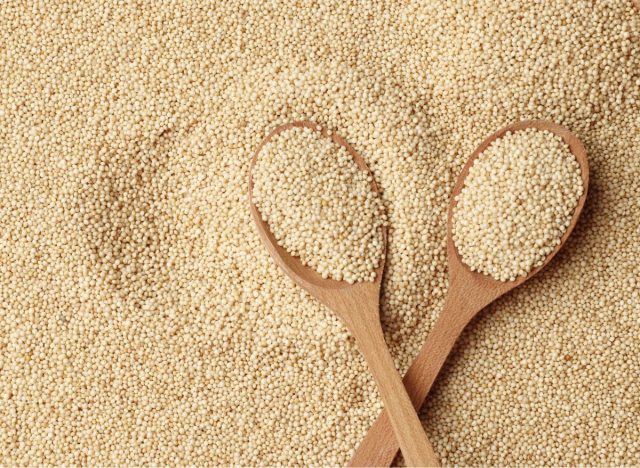
Protein per cup (cooked): 9.4 grams
Next in line for the highest-protein whole grain is an ancient grain called amaranth. This gluten-free grain is technically a seed but is still classified as a whole grain, and in a one-cup serving, you'll be getting almost 10 grams of protein. As with many of the grains on this list, you can either cook amaranth with boiling water in the same way you would with rice, or you can ground it into flour.
A unique benefit of this high-protein grain is that in a serving of amaranth, you'll get almost your entire day's worth of manganese—a nutrient that is necessary for your bone health and your body's absorption of certain nutrients. The benefits don't stop there, though.
Amaranth is also considered to be one of the only grains (along with quinoa) to be a "complete protein," meaning it contains all nine essential amino acids. Your body needs a combination of complete and incomplete proteins to function, but most complete proteins are animal-based products so it can be harder to find plant-based complete proteins.
Quinoa
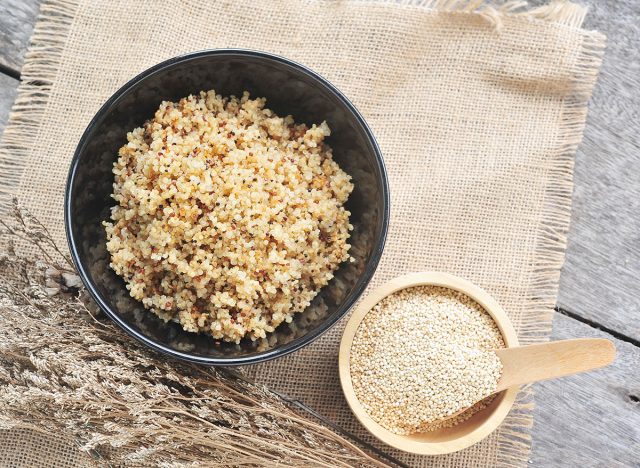
Protein per cup (cooked): 8.1 grams
Speaking of quinoa, this complete protein source is a versatile and affordable way to get in some extra protein at any meal. You can use quinoa as a replacement for rice as a side dish, the base of a soup or stew, in your favorite salad, or you can turn it into a sweet and savory breakfast porridge.
Quinoa is high in protein, fiber, and other nutrients like manganese, folate, iron, and copper, and research shows that it contains high levels of antioxidants like quercetin and kaempferol, which have been linked to having powerful anti-inflammatory properties. As mentioned previously, this grain is one of the few that counts as a complete protein source.
Wild Rice
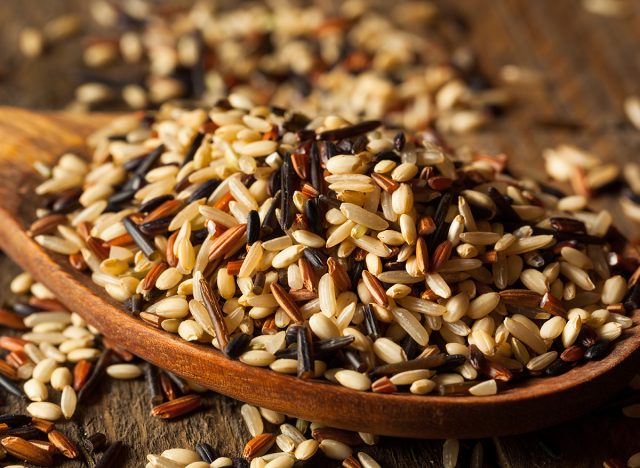
Protein per cup (cooked): 6.6 grams
Wild rice isn't like your typical bowl of white rice. This grain comes from the seeds of an aquatic plant that grows in certain lakes in rivers in Canada and the United States, and it provides a slew of tasty benefits.
Whereas white rice is highly processed and stripped of most of its nutrient density, wild rice remains high in protein, fiber, vitamins, and minerals. Research shows that wild rice is also rich in antioxidants and that eating this whole grain can help lower blood cholesterol.
Farro
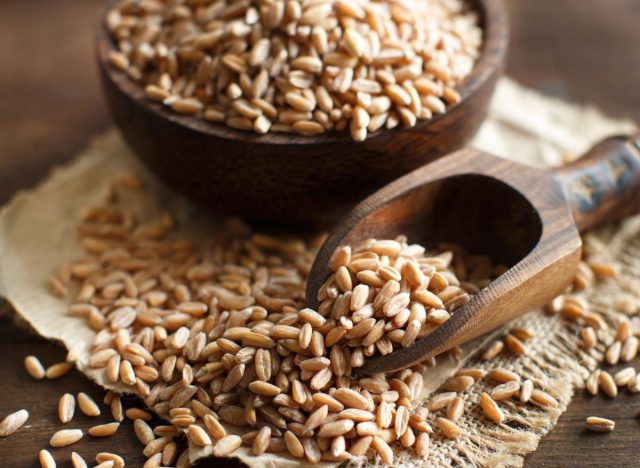
Protein per serving: 6 grams
Rounding out our list of high-protein grains is farro—an ancient grain that has its origins in Rome. It's known for having a chewy texture and nutty flavor, and you can cook it with water and use it in the same ways you'd use rice or another grain on our list. You can find Farro in most stores, so you can easily replace your white rice or pasta with this whole grain.
Along with containing 6 grams of protein, Farro also has almost 7 grams of fiber in each serving, making it one of the higher-fiber grains on our list.
- Source: Protein. (2023, October 19). The Nutrition Source. https://www.hsph.harvard.edu/nutritionsource/what-should-you-eat/protein/
- Source: FoodData Central. (n.d.-g). https://fdc.nal.usda.gov/fdc-app.html#/food-details/169716/nutrients
- Source: FoodData Central. (n.d.-c). https://fdc.nal.usda.gov/fdc-app.html#/food-details/168918/nutrients
- Source: Habte ML, Beyene EA, Feyisa TO, Admasu FT, Tilahun A, Diribsa GC. Nutritional Values of Teff (Eragrostis tef) in Diabetic Patients: Narrative Review. Diabetes Metab Syndr Obes. 2022 Aug 22;15:2599-2606. doi: 10.2147/DMSO.S366958. PMID: 36035517; PMCID: PMC9416382.
- Source: FoodData Central. (n.d.-b). https://fdc.nal.usda.gov/fdc-app.html#/food-details/169744/nutrients
- Source: Office of Dietary Supplements - Iron. (n.d.). https://ods.od.nih.gov/factsheets/Iron-Consumer/
- Source: FoodData Central. (n.d.-d). https://fdc.nal.usda.gov/fdc-app.html#/food-details/170683/nutrients
- Source: Office of Dietary Supplements - Manganese. (n.d.). https://ods.od.nih.gov/factsheets/Manganese-HealthProfessional/#h9
- Source: Alonso-Miravalles, L., & O’Mahony, J. A. (2018). Composition, protein profile and rheological properties of Pseudocereal-Based Protein-Rich Ingredients. Foods, 7(5), 73. https://doi.org/10.3390/foods7050073
- Source: FoodData Central. (n.d.-f). https://fdc.nal.usda.gov/fdc-app.html#/food-details/168917/nutrients
- Source: Lin M, Han P, Li Y, Wang W, Lai D, Zhou L. Quinoa Secondary Metabolites and Their Biological Activities or Functions. Molecules. 2019 Jul 9;24(13):2512. doi: 10.3390/molecules24132512. PMID: 31324047; PMCID: PMC6651730.
- Source: FoodData Central. (n.d.-e). https://fdc.nal.usda.gov/fdc-app.html#/food-details/168897/nutrients
- Source: Gangadaran Surendiran, Maha Alsaif, Fatemeh Ramezani Kapourchali, Mohammed H Moghadasian, Nutritional constituents and health benefits of wild rice (Zizania spp.), Nutrition Reviews, Volume 72, Issue 4, 1 April 2014, Pages 227–236, https://doi.org/10.1111/nure.12101
- Source: FoodData Central. (n.d.). https://fdc.nal.usda.gov/fdc-app.html#/food-details/1547225/nutrients









